Sports in Pictures (Sports Activities)
Ball game in the centre of Warwick Village. Courtesy J O'Neil.
by Mary and Paul Janes
Hockey and baseball may have been the two most common sports in over the years, but they are not the only sports in which residents have participated. The next few pages describe or show some of the activities in which residents have been involved. Once again, they are representative only, not exhaustive.
FIELD SPORTS
Cricket
The September 24, 1886, issue of the Watford-Guide writes about a cricket match under the headline “The Crease: Watford Wins from Wyoming Wicket Wielders.” In part it reads:
Watford was sent to bat, and in a long stay there amassed 59 runs…. Watford’s second innings was illustrated by [J.] Cook’s brilliant stand. The first to bat, he remained on the crease to the end, and left it with a splendid sum of 54 runs, not out. This number, together with his 15 of the previous innings, gave him a grand total of 69 runs, an achievement for which he was nobly bouquetted by the Wyoming ladies.
Baseball
Ball diamonds are common throughout Twp. Arkona, Forest, Village and Watford all have at least one. John Smith has included information about baseball in in his Memories of Village. Arkona, Forest and Watford all have published histories which include sports.
Jim Millier played softball and baseball in the Watford area and around Lambton County. He sent some of his memories.
The diamond with lights at Village increased interest in softball. It meant they could play doubleheaders in an evening. The Junior Farmers had a strong team with Don Blain, a “windmiller” as pitcher.
One interesting thing that happened at a Watford Atoms baseball game involved Bill Pardy, who worked for the agriculture department and boarded in Watford. He received the nickname of “Cricket” after he swallowed a live cricket on a dare following a game! Sam Janes was the Public Relations man and the scorer for the team at that time.
Soccer
A field sport that has gained popularity among youngsters in Twp. in recent years is soccer. The Taxandria Falcons Soccer Club was formed in the 1970s, with a single team of 20 players playing on a field beside Taxandria Community Centre. In 2008 there are over 300 families involved, with over 500 players, coaches and referees. The Club teaches the fundamentals of soccer in a fun way, and continues its activities during the winter with indoor soccer at North Lambton Secondary School. The soccer pitches were sold in 2006 when Taxandria was sold. In 2008 the Club is in the process of developing a new soccer complex next door to the original one.
Track and field
Roy Caley was the first Race and Publicity Manager of the Watford 10 Mile Road Race (in 2008 called the Watford-Alvinston Optimist Road Race and measuring 16 kilometres). The first race was held in 1957, when two runners, Hylke Van der Wal and Lorne Smith, discussed the idea with Roy. In the very first race nine men ran; seven finished. In 2007 approximately 500 runners were involved in either the 16 km or the 8 km race.
One old photo shows that lawn bowling was very popular at one time.
First Lawn Bowling Club, Watford. Courtesy Watford Historical Society.
ICE SPORTS
Skating and Hockey
Not all sports were organized events. John Smith, in his Memories of Village, remembered a skating rink east of Bear Creek which had a building for skate changing and a four-foot fence built by volunteer labour in about 1910. At that time the village had a very good hockey team. The hockey team was made up of Vic Barnes, Ken Ross, Gunne Newell, Alf Smith, Clarence Barnes, Ben Dann, Bob Stewart and Jim Brush. This rink was eliminated when Hwy 22 was paved in 1927.
The November 1931 Watford Guide-Advocate recorded that now that the new bridge (a concrete arched one which replaced the previous steel-framed one) was open, a new skating rink was being constructed on the south side, on the Bear Creek flats. It was 60 by 100 feet, with electric lights. The lighting system was supplied by Harold Cosens until 1935, when he sold his system. After that it was supplied by the Maple Leaf Hotel. To keep the rink in use, snow was removed after every snowfall and the surface was generally flooded twice a week. John Smith remembered that the lunch after the flooding was 10 cents — five cents for a 12-ounce bottle of Pepsi and 5 cents for a peanut- slab chocolate bar. The board fence was built from scrap wood from the sawmill. The hockey team of this era was made up of Allan Learn, Bertie Dann, Jack Jordan, Jack Prince, Norton Cox, Fred McIntosh, George Atkinson, L. S. Cook. Sr., W. Barnes, John Smith, John Main, Harold Barnes, John Dolan, George Brush, Kenny Inman, Gerry Barnes, Elmer Goodhand, George Smith and Cecil Shea.
This rink operated until 1940, when the war took the players away and the work involved in its upkeep was too much for the people in the village.
Watford’s hockey has been somewhat more organized, with an arena and association with other minor hockey organizations. Roy Caley was one of the prime movers behind both the Watford Minor Hockey Association and Silver Stick hockey. The first International Silver Stick Hockey tournament in Watford was in January 1960. Caley was the tournament director for several years, commissioner of the Silver Stick Association in 1973, and then he sat on the Board of Directors. The Silver Stick Hockey program is organized to promote citizenship and international goodwill and to foster sportsmanship through hockey. The first tournament in Watford saw a total of 22 teams (Pee Wee and Bantam divisions) participate. In 1998 there were 77 teams in the Bantam division alone. The Watford event is now known as the Roy Caley Memorial Silver Stick Tournament.
Terry Holbrook was the first Watford Minor Hockey League player to play in the National Hockey League, when he was drafted by the Los Angeles Kings in 1970, then traded to the Minnesota North Stars.
Curling
The Watford Curling Club was formed in 1961. Each February they held a bonspiel at which the May Bowl was presented. This trophy was originally donated by the May family who enjoyed curling before they relocated to another community.
Watford Curling Club 1961. Back row: Jack McKone, Stan Edwards, Harold Newell, Joe Woodall, Bill Rankin, Clare Taylor, Ron Wallis, Hank Venema, Ross Saunders, Graham Woods, Jim Redmond, Jim Harper. Third row: Burt Cook, Lloyd Barnes, Laverne Hollingsworth, Ross Luckham, Hiram Moffatt, Betty Rankin, Anne Day, Betty Venema, ?, George Howsam, Darlene Barnes, Bob Graham. Second row: Laura Hume, Eloise Hollingsworth, ?, Iona Woodall, ?, Dr. Russell Woods, Eileen Morgan, Orville Wallis, Mrs. Jack Kersey, ?, ?, Mrs. Stan Edwards, Ila Winters,?, Anne Morningstar, Pat Graham, Jean Hollingsworth, Ethel Watson, Mrs. Lloyd Coristine, Kay Bryce (Harper), Mrs. Russ Woods?. Front row: Gwen Burchill, Lyle Cundick, Ross Hume, Don Hollingsworth, Alex Galbraith, Ben Winter, Dick Day, Marg Cundick, Lloyd Coristine, Ray Morningstar, Russ Watson. Courtesy D Hollingsworth.
Watford Curling Club reunion 2006. Courtesy The Guide-Advocate.
Figure Skating
The Watford Figure Skating Club was formed in 1961. It has held an annual carnival since then. Skaters progress through a sequence of tests and a select few compete provincially and then nationally. Diane Szmiett was one
of the select few.
Diane Szmiett, Canadian Junior Women’s Figure Skating Champion, 2006. In Aug. 2008 Diane won the bronze medal in women’s singles, junior Grand Prix, in Courchevel, France. Courtesy The Guide-Advocate.
HORSE RACING
Ron Ellerker with Derby Dan. Courtesy R Ellerker.
In the earlier years horse racing was a favourite sport, especially in rural areas. Nearly every urban village and town had their race track. The Roche Brothers of Watford — David, Thomas, John and Michael — were known all over Canada for their driving ability, their race horses and the interest they took in keeping horse racing popular.
The Roche’s most famous horse was the stallion Paddy R, who was especially good on the ice tracks of pioneer days. Paddy R raced in the late 1800s or early 1900s. During one of his races, Paddy R broke his leg. He won some of his best races after the leg had healed. After his racing days were over, he went to Western Canada, where he lived until he was 29 years old.
The Cinderella Horse: In 1946 W. L. (Lindley) Fraser of Forest, Ont., paid $500 for an undistinguished 5-year-old gelding named Dr. Stanton, which he described at the time as resembling “a truck horse.” Dr. Stanton was born to Mary Philistine, by Bonnycastle. He was named for a beloved small-town physician who happened to be present when the colt was born. His trainer Joe Dodge tried to make a trotter of him, but was unsuccessful. Later Dr. Stanton proved he could go with the best of them, not as a trotter but as a pacer. Before long he was known as “the Cinderella horse.” Fraser wisely decided that Dr. Stanton’s best gait was on the pace, a move that enabled him to become the richest pacing gelding in the world. After starting Dr. Stanton’s race career at Northville Downs, Michigan, in 1946, Fraser drove him to earnings of $171,922. After finishing third in his first start, he won eight in a row. The next season he won 18 of 20 starts. His wins included the $10,000 Chicago Pacing Derby. In an era when virtually all harness races were held at only a mile, he set a world record of 3:11.3 for a mile and one half over a half-mile track in winning the Downing Memorial Pace. He also won the two-heat Fairmount Pacing Derby, but lost the Golden West Pace in California, a race won by Indian Land. The result was controversial because of a starting recall that not all the drivers heard. Dr. Stanton had gone three-quarters of a mile before Fraser realized a recall had been called. It prompted a special Challenge Pace, a match race in which Dr. Stanton beat Indian Land by a length in world record time of 2:31 for one and a quarter miles. He came back a week later to lower the record to 2:30.2. In 1948, he led all pacers in earnings and set nine world records. Two of Dr. Stanton’s major Canadian victories came five days apart in the summer of 1950. He won the $15,000 Canada Cup Pace at Thorncliffe Park by the flip of a coin. The event, the richest harness race in Canada at that time, was raced in two heats. Dr. Stanton took the first heat, with Linda’s Boy fourth. Their placings were reversed in the next heat, and track officials brought out a 50-cent coin to determine a champion. The owner of Linda’s Boy called heads, and when the coin turned tails on the paddock grass, Fraser was the owner of the cup. Five days later in the Canadian Pacing Derby at New Hamburg, Dr. Stanton won all three heats before a crowd of 10,000. Fraser was the only man who ever raced him in his 197 starts over seven years, producing a 74-37-27 record. Dr. Stanton dropped dead at the age of 12 during a warmup mile at Hazel Park in Detroit in 1953. He was buried on Raceway property near the village of , where Lindley Fraser was a director. The plot honoring the memory of the great pacer was marked with a granite memorial next to Highway 7. In later years, the pallet factory that was operated on the property was called Stanton Pallets in honour of the famous pacer. When Lindley Fraser died in 1974, the monument was moved to his gravesite in Forest. Dr. Stanton was inducted into the Canadian Horse Racing Hall of Fame in 1976. SOURCES: Canadian Horse Racing Hall of Fame website Bill Fraser, Th e People’s Choice, unpublished collection of articles about Dr. Stanton.
In 1946 W. Lindley Fraser of Forest, Ont., paid $500 for a five-year-old gelding named Dr. Stanton, which he described at the time as resembling “a truck horse.” Before long he was known as “the Cinderella horse.” Dr. Stanton was inducted into the Canadian Horse Racing Hall of Fame in 1976.
Ron Ellerker’s best horse was Derby Dan. He started racing in 1972. From then until 1983 he raced 92 races, winning 91, with Ron driving. In one year Derby Dan won $64,000.
STOCK CAR RACING
(summarized from article by Tom Hicks, source and date unknown)
Stock Car Racing poster, Warwick Village. Courtesy S McKay.
“Gavigan Farm to Be Site of Hot Rod Race Track,” proclaimed the headline of the Canadian Observer in November, 1951. Situated north of Hwy 7 at the eastern gates of Village, the race track was constructed in the Bear Creek flats by diverting Bear Creek to the north of the natural ravine. This, with some grading and bulldozing, left a natural amphitheatre depression and a ¼-mile track.
Officials of the operation included Wilfred “Wick” Fraser as president, John Campbell as vice-president, Lindley Fraser as director, and Leo Gavigan as secretary- treasurer.
Preparations at the race track, including floodlights, ticket booths and concession stands, were completed by opening night of May 24, 1952. Unfortunately, a torrential downpour the previous night flooded the track  and postponed activities for another week. On opening night a crowd
and postponed activities for another week. On opening night a crowd
estimated to be between six and eight thousand witnessed a racing card of eight events. It was a standing room only event, as of those who attended, only 4000 were able to use the hard wooden bleachers.
Special events that year included some “powder puff ” events. Mrs. Ida Gavigan was the top female driver at the track. The next year, on June 16, 1953, a special meet was held to aid the Lambton County Tornado Relief Fund, raising a net sum of $1,330.
Another attraction was the dance hall known as the Old Horse Barn that was moved to the raceway property from St. Paul’s church at Wisbeach.
In 1954 Ray Frayne, ’s fire chief, still unfurled the flags, Sam Siskand was still master of ceremonies in the announcer’s stand, and Wilf Marriott’s Esso garage, at the track entrance, still provided a haven for race cars and drivers alike. What was no longer the same were the crowds, which now averaged around two thousand per event. Several things were tried in an effort to bolster attendance, including a contest whereby the driver with the winning time in a feature event would receive the keys to a brand new Ford sedan courtesy of Rawlings Motors in nearby Forest.
In 1955 dismal crowds took their toll. The little creek- side oval turned off the flood lights for the last time on July 2. The paved tracks of surrounding communities drew the crowds away from the dust of the track.


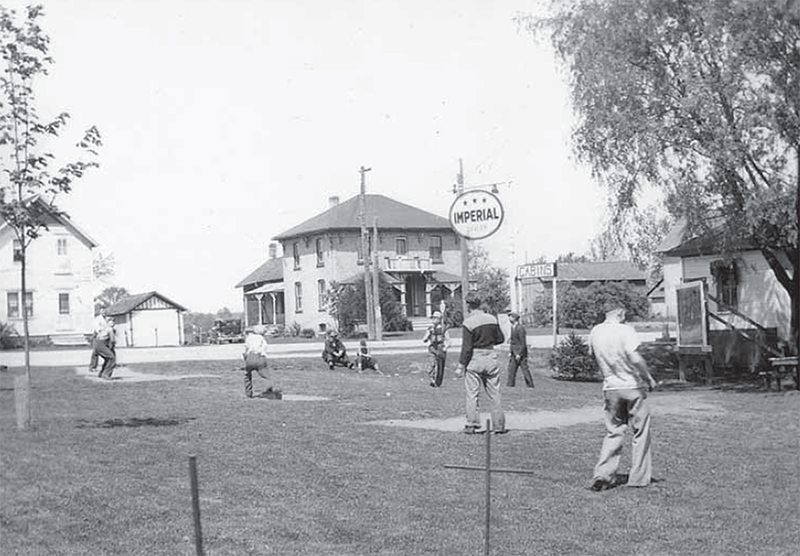
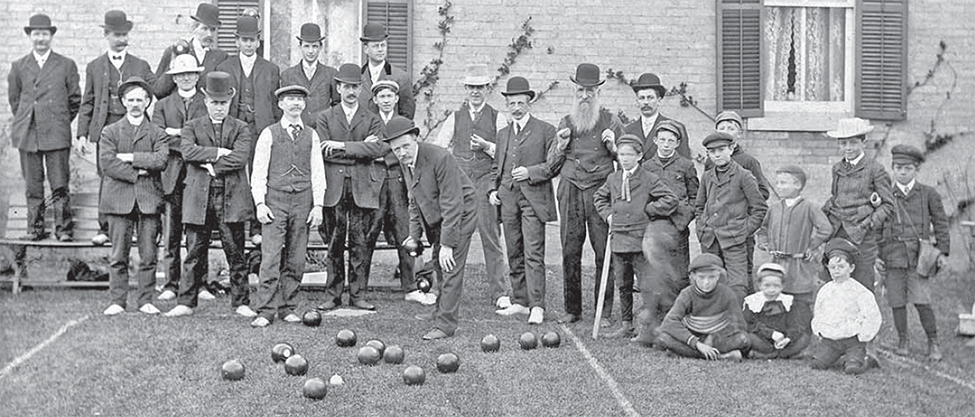
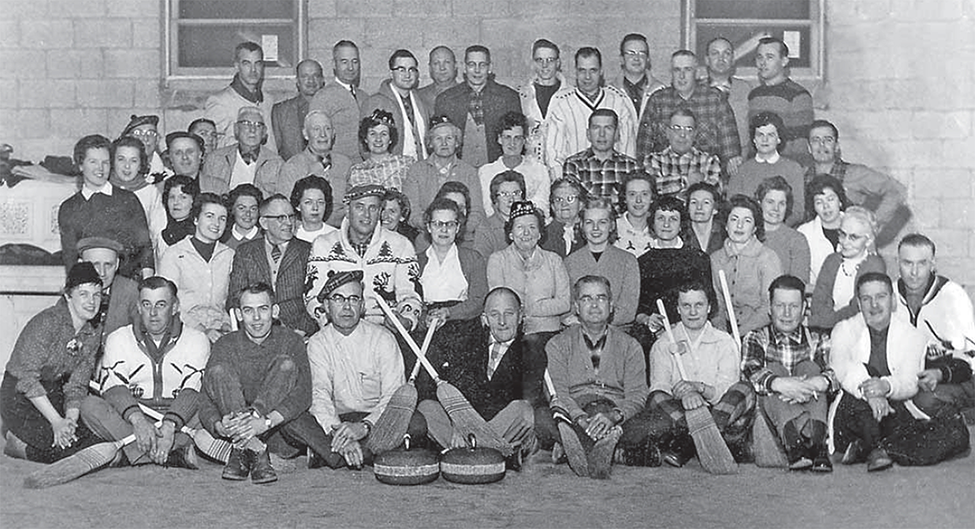
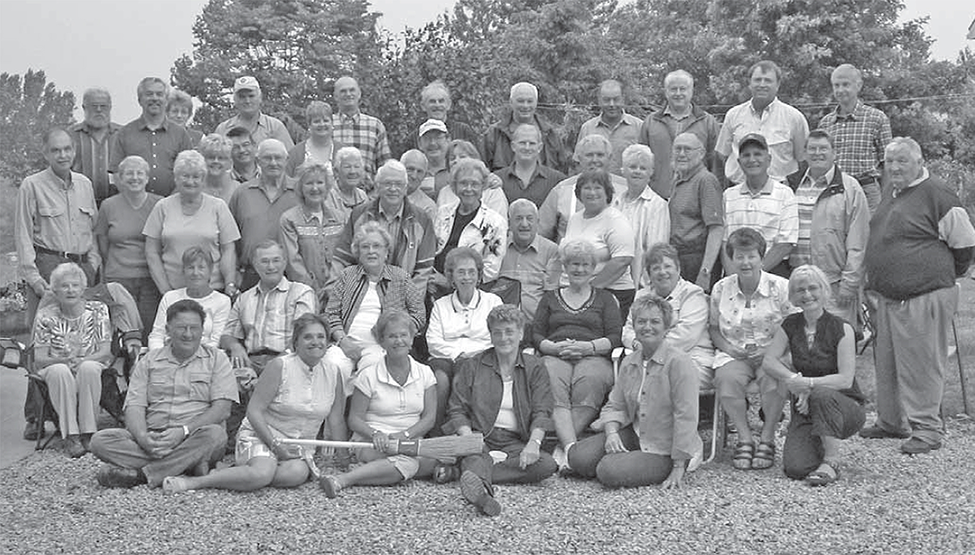
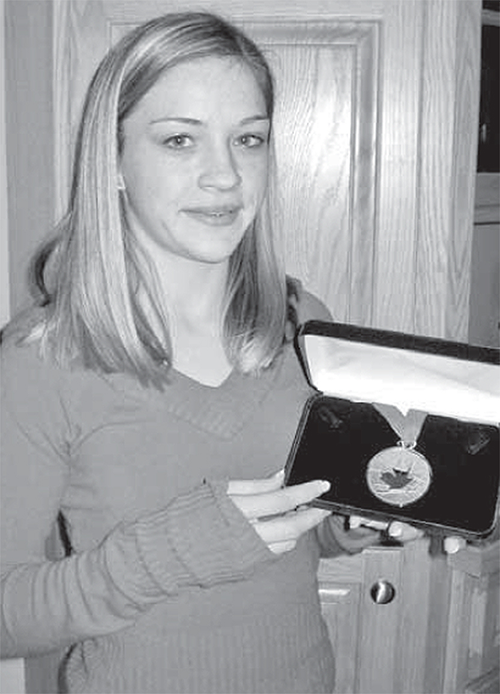
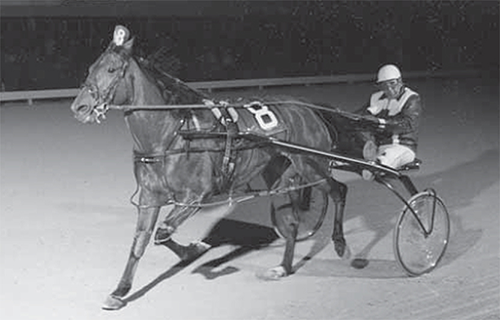
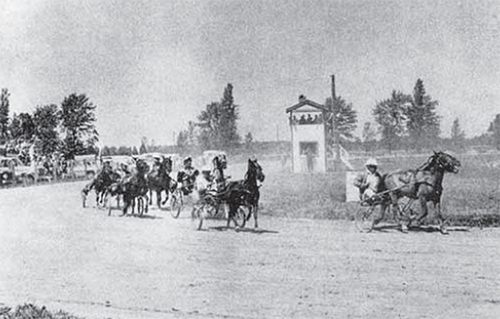
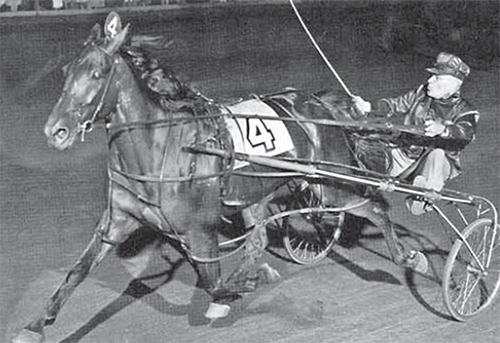
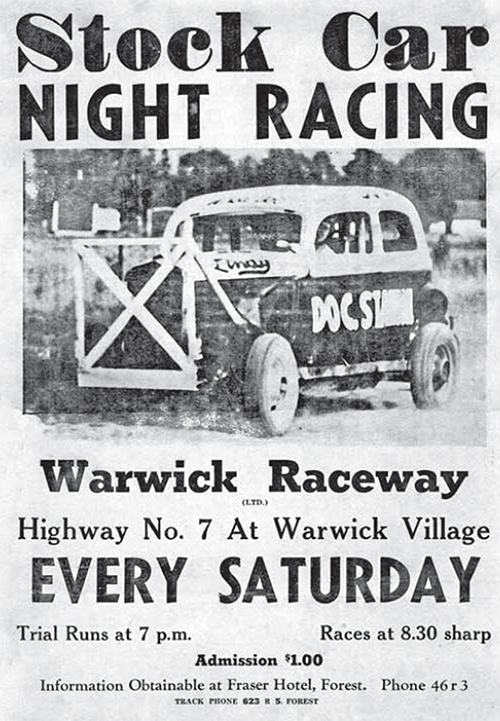
 Subscribe to this page
Subscribe to this page